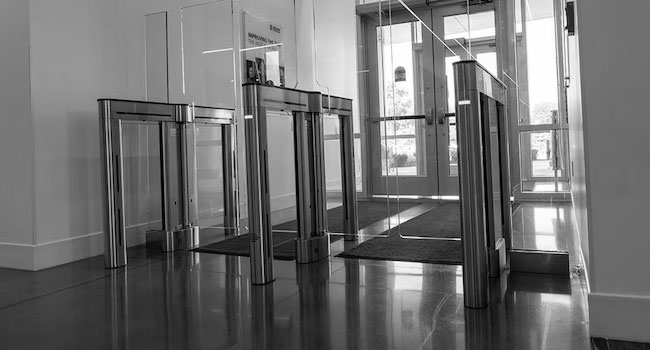
Safeguarding your Facility
Turnstiles: What are you trying to achieve?
- By Kassi Karr
- Mar 01, 2023
When assessing whether turnstiles are appropriate for your facility, ask this first question: What are you trying to achieve?
- Enhance the general security at any entrance or exit point, no matter whether it is manned or unmanned.
- Detect tailgating for security purposes.
- Reduce your reliance on your security guard staff and/or make your existing staff more efficient.
- Increasing the accuracy of mustering.
- Ticketing for events.
- Membership identification and access.
- Money or fare collection for access.
If the answers to any of these questions are ‘Yes’, then a turnstile should be considered.
Security is a priority, but it is also critical to eliminate the risk of tailgating and membership misuse, as well as prevent loss. In the case that these factors are relevant to securing your business, then the answer to your question is always yes. While their loud and prominent appearance makes them effective deterrents, their capabilities make them effective in all the areas mentioned above.
Among the many ways in which a turnstile can protect what matters most, there are a number of unique uses for them. While full-height turnstiles still dominate the industry today, optical turnstiles are gaining popularity in corporate lobbies, stadiums, and college campuses because of their integrations and capabilities.
Environments and Applications of Turnstiles
Recreation centers and dining halls are the most common facilities where optical turnstiles installed at universities and colleges. This turnstile has an integrated software system that allows tracking of meal cards and membership cards. With this software, it is impossible for a student or administrator to use another person's card, focusing on single-entry authentication. Over the years, the number of Avant-Garde installations on college campuses has steadily grown, and we anticipate that turnstiles will become mainstream in all universities soon.
As a result, the modern appeal of optical turnstiles have become increasingly popular in corporate offices and lobbies. In addition to designing a secured entry product that fits aesthetically, Avant-garde can ensure it provides the security that keeps employees and visitors safe. By using options like tailgating and biometrics, you can guarantee that only authorized people can access the facility.
The entrance of large corporate buildings will typically have two types of turnstiles. Through a full-height revolving door turnstile, a single user will be able to enter the building, followed by an optical turnstile that allows only a permitted user access to a specified area via biometrics, facial recognition and card reader integrations. Additionally, this allows onsite security staff better visibility of who enters and exits the building and enables the flow of traffic to be controlled.
Stadiums and arenas are also examples of facilities that use turnstiles for access control as well. As concerts and sporting events in recent years have become more popular, these facilities are deploying optical turnstiles that integrate metal detection and barcode technology. As a result, attendance can be counted and help ticketing and security processes can be sped up. This optimizes the attendees' experience, eliminates manual ticket checks, and reduces entry point security.
This enhanced security option also provides high-end facilities with the ability to monitor, track, and analyze traffic flow, allowing them to optimize their entry and exit points and provide an even better experience for the attendees.
With this trend in mind, casinos are implementing turnstiles at their entryways to keep track of their patrons, and not necessarily as a measure of security. As a result, gathering real-time data during peak business hours allows the company can make informed decisions regarding the direction of the business. Thus, they can make informed decisions when it comes to the division of staff between different departments as a result. In addition, this data will help determine how many people will attend an event and the amount of needed staff. The traffic data produced at a large event will assess the costs associated with hosting the event. Additionally, people counters can assess revenue from other sources, such as shops, restaurants and shows.
Although, they are not as technologically advanced as optical turnstiles. The full-height turnstile is still a top pick when it comes to the most used turnstiles in factories, distribution centers, and construction work sites, due to its ability to provide the highest level of security. The advantages of a fully enclosed turnstile are an unprecedented level of security and it stops people from climbing over, or around the device. Furthermore, the turnstile also can allow a single user to enter by employing a lock mechanism. This prevents the turnstile arms from spinning before a completed pass, and the next user has presented a credential for entry.